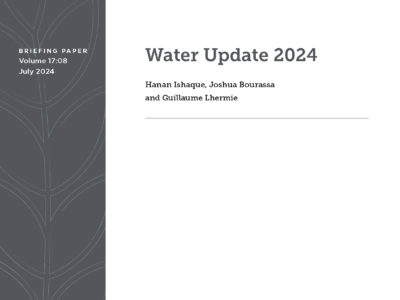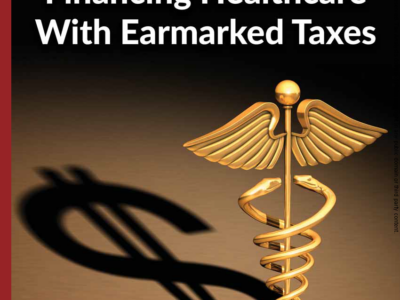Publications
This study aims to provide a policy brief on Canada’s beef and cattle production and exports, and international market access and conditions. Trade barriers are identified and evaluated, and the implications of non-tariff measures (NTMs) are examined. These include, for example, the ban imposed by the European Union and the United Kingdom on the importation of peroxyacetic acid (PAA)-treated and hormone-treated beef, and the United States’ political/legislative attempts to invoke the mandatory country-of-origin labelling (CoOL) standard for Canada’s beef exports.
This study also discusses the benefits and limitations of preferential trade agreements (PTAs) for Canada’s beef exports, such as the Canada-U.S.-Mexico Agreement (CUSMA); the Canada-EU Comprehensive Economic and Trade Agreement (CETA); and the Comprehensive and Progressive Agreement for Trans-Pacific Partnership (CPTPP). The study concludes by exploring the opportunities to increase Canada’s beef exports and competitiveness in international markets.
Wednesday, August 07, 2024
Pascal L. Ghazalian
The One Health (OH) approach is collaborative, multisectoral, and transdisciplinary, acknowledging the interdependence among animal, human and environmental health. It has garnered attention within the scientific community, particularly in response to the rising prevalence and global spread of emerging and re-emerging infectious diseases. Common OH issues include zoonotic diseases, antimicrobial resistance (AMR), food and water safety, and the human-animal bond. Among various OH topics, AMR represents a well-described, long-term, complex issue, with a substantial global death toll and large economic costs. Whereas interdisciplinary and transdisciplinary teamwork seems appropriate to address such complex challenges, effects on knowledge production are poorly known. In this study, we investigate how the scientific community mobilizes “One Health.” A comparative bibliometric analysis of OH and AMR research enabled us to assess the level of transdisciplinary research, identify emerging themes, through a co-occurrence network analysis of keywords, and disciplines mobilized, through a co-citation network analysis of scientific journals, in research, as well as level of international collaboration through analysis of co-authorship among countries. We detected a lack of consideration for non-communicable diseases (e.g., obesity, diabetes, cardiovascular diseases) and the well-being of human and animal populations in analysis of themes. Furthermore, although many disciplines are involved in OH and AMR research, little attention was given to social sciences, environmental health, economics, and politics. There was a strong influence of major global economic powers, including the United States and China, in scientific research on OH and AMR, as well as substantial collaboration among European countries. The present results indicated that guidelines are needed to address the mentioned concerns, and specific funds are required for underrepresented countries.
Tuesday, July 30, 2024
Lisa Vors, Didier Raboisson, and Guillaume Lhermie
The Water Wealth in Agriculture event was hosted in October 2022 in conjunction with the University of Calgary’s Simpson Centre, Schulich School of Engineering, Faculty of Science, and the University of Saskatchewan’s Global Institute for Water Security. It invited a diverse set of expert stakeholders from industry, government, and research (see annex) to discuss sustainable water management for agriculture. This paper summarizes the opinions and suggestions of the diverse interest groups attending the event about recent and current action on sustainable water practices.
Tuesday, July 16, 2024
Hanan Ishaque, Joshua Bourassa and Guillaume Lhermie
The focus of this paper is to determine whether earmarking health taxes or other revenue mobilizes greater public healthcare support as argued by the World Health Organization. We examine six case studies in which taxes or revenues have been earmarked to support public healthcare: Brazil, France, Germany, the Philippines, South Africa, and South Korea. We find that earmarking does not lead to more revenue spent on healthcare on a sustained basis, except for experiences in the Philippines and for long-term care in Germany.
Wednesday, July 10, 2024
Janice MacKinnon, Jack M. Mintz, and Mukesh Khanal
Mastitis is one of the most common diseases of dairy cattle. It has a high impact on-farm economy, farmers’ working time, and antimicrobial usage (AMU). Selective dry cow therapy (SDCT) is an effective means of reducing AMU without negatively affecting udder health. The objective of our study was to evaluate the impact of SDCT implementation on farmer income, working time, and AMU, using a bioeconomic model. A stochastic dairy simulation model (DairyHealthSim) based on a weekly model was used to simulate herd dynamics, reproduction, milk production, culling decisions, health outcomes, and the management of health events. A specific module was developed for the simulation of quarter-level IMI acquisition and elimination during the lactation and dry-off periods, and 25 different farm settings were defined to represent herds with various udder health situations. We then defined 20 scenarios of SDCT by combining both the use of different thresholds of SCC and milk bacteriology for treatment allocation and the use of internal teat sealant (ITS). All SDCT protocols had little effect on farmer income, and we identified some protocols with a positive farm gross margin (up to Can$15.83/dried cow; at time of writing, Can$1 = US$0.72). We also found that adding an ITS to all cows led to greater economic gain. The application of SDCT had little effect on farmers’ working time, except when milk bacteriology was used for decision making. Antimicrobial treatment to all cows above 200,000 cells/mL at last control, with the use of ITS on all cows, seems a good choice in most dairy farms. These findings could be used to convince farmers to adopt this strategy at dry-off.
Thursday, June 20, 2024
Thomas Le Page, Ahmed Ferchiou, Simon Dufour, Fidèle Kabera, Jocelyn Dubuc, Guillaume Lhermie, Didier Raboisson, and Jean-Philippe Roy
La “loi de santé animale” (règlement (UE) 2016/429) impacte les politiques publiques de surveillance, de prévention et de lutte conte les maladies animales, en mettant particulièrement en avant la biosécurité. Cette étude avait plusieurs objectifs : estimer les coûts de la lutte contre les maladies animales réglementées dans différentes filières, analyser leur ventilation par partie prenante et évaluer les impacts socio-économiques de l’application de cette loi.
Étude réalisée par l’École nationale vétérinaire de Toulouse. Financement : ministère de l’Agriculture et de la Souveraineté alimentaire.
Source: Ministère de l’Agriculture et de la Souveraineté alimentaire
Monday, June 17, 2024
Guillaume Lhermie, Didier Raboisson, Lucie Guinaliu Buttarelli, Lisa Vors, and Mehdi Berrada






